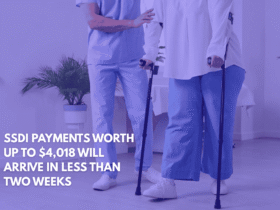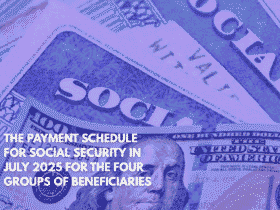Every month, the Social Security Administration (SSA) in the United States sends retirement payments to eligible citizens. But among all the payments in April, the one on the 3rd is extra important.
This is because it is the very first retirement payment of the month and goes to a special group of people—those who have been retired the longest. These individuals often depend the most on this money, making them some of the most vulnerable citizens.
If you’re getting a Social Security retirement check, this April 3rd payment might be for you. But to receive the money on this exact day, you need to be part of a specific group of retirees. Let’s break it down in simple terms.
Who Gets the April 3rd Social Security Payment?
Only one group of retirees receives their Social Security payment on April 3rd, 2025. This group is called Group 1 retirees. To be in this group, you must have retired before May 1997. So, if you stopped working and started receiving Social Security benefits before that time, this payment is meant for you.
But there’s one more thing to know. Just being part of Group 1 isn’t enough to get the money in your account on April 3rd. You must also have the Direct Deposit option set up for your payments. This is the fastest method, and it sends the money directly to your bank account. If you don’t use Direct Deposit, you will still get the payment, but it might take a few extra days to reach you.
What is the Amount You Can Get?
The amount you receive each month doesn’t change unless there’s an official increase. If you got ₹1,860 (converted from $1,860) in February and March, you’ll get the same amount in April. This monthly benefit is fixed once you retire. It’s based on your earnings during your working years, how long you worked, and the age at which you retired.
Some people may wonder about the $5,180 payment they’ve heard about. This is actually the maximum monthly payment a person can get from Social Security in 2025. But not everyone receives this amount. To qualify for this, a person must have earned a high salary over many years and delayed retirement until the age of 70.
How Can You Get a Higher Social Security Payment?
If you haven’t retired yet, you still have a chance to increase your future Social Security payments. Here’s how:
You should try to work for at least 35 years. The SSA looks at your best 35 years of earnings to calculate your benefit. If you work fewer years, you might get a lower amount.
Try to earn a higher salary during your career. The more you earn, the more Social Security tax you pay, which can increase your future benefit.
Consider delaying your retirement. If you wait until you’re 70 years old to claim Social Security, your monthly payment will be much higher compared to retiring at 62 or even 65.











Leave a Reply